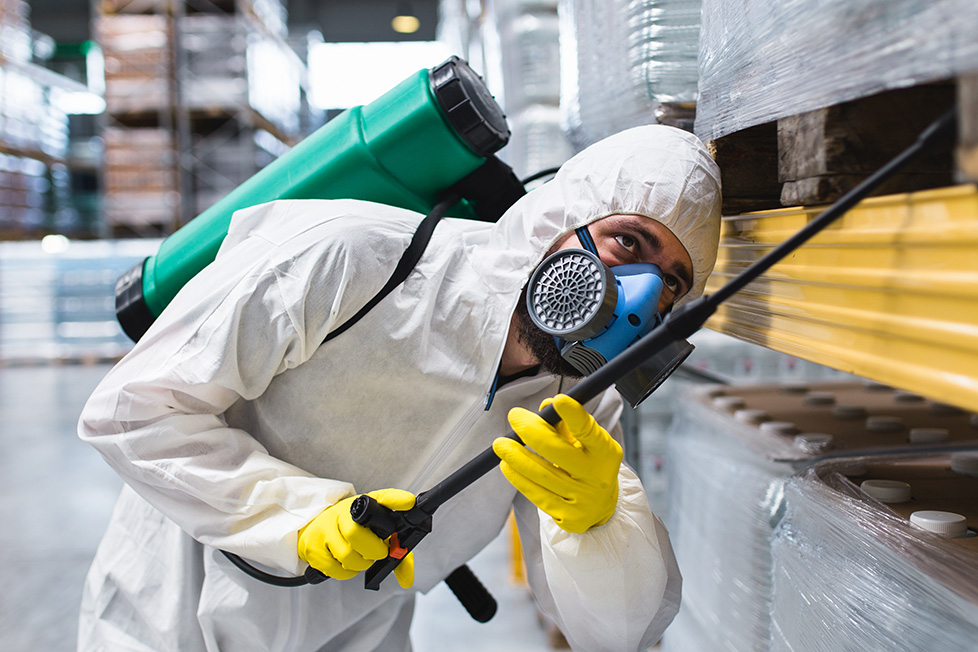Remove pests with the best Pest Control in your area.
Eco-Friendly Pest Control Approaches for Handling Wild Animals in Urban Areas
Urban locations often locate themselves at the junction of human task and wildlife, leading to one-of-a-kind challenges in pest management. These strategies not just secure the setting but also boost area interaction in wildlife management. As city populaces proceed to grow, understanding the characteristics of wild animals interactions ends up being progressively important.
Understanding Urban Wild Animals Characteristics
Understanding Urban Wild animals Dynamics is vital for developing reliable and environment-friendly insect control strategies. Urban locations are progressively becoming environments for different wild animals types, driven by factors such as habitat fragmentation, food accessibility, and human infringement. Identifying these characteristics enables a nuanced approach to pest management that aligns with environmental principles.
Urban wild animals frequently consists of species such as raccoons, squirrels, and birds, which adjust to city atmospheres, finding specific niches in green areas, parks, and also houses. Their presence can cause conflicts with human beings, particularly when they make use of human sources for food and shelter. Comprehending the actions and environmental duties of these types educates techniques that lessen negative interactions while advertising biodiversity.
In addition, acknowledging the interdependencies within metropolitan ecosystems helps in determining essential areas for environment conservation and restoration. This understanding adds to the growth of integrated parasite management (IPM) methods that take into consideration the eco-friendly equilibrium, thereby decreasing reliance on dangerous chemicals. By cultivating conjunction in between humans and urban wildlife, cities can create healthier atmospheres that benefit both locals and regional environments, leading the way for lasting city living.
All-natural Repellents and Deterrents
All-natural repellents and deterrents use a lasting option to standard parasite control approaches by harnessing the power of nature to maintain undesirable types away. These environmentally friendly services usually use plant-based ingredients, important oils, and other naturally happening materials that prevent bugs without hurting the environment.
One effective natural repellent is peppermint oil, which is known to drive away rodents and pests. Its strong scent is unpleasant to several bugs, making it a prominent selection for city setups. Likewise, vinegar and citrus peels can serve as deterrents, as their solid smells are usually unattractive to various wildlife.
In addition, diatomaceous planet is an all-natural powder that can be spread in locations susceptible to insect task, effectively dehydrating and discouraging pests without positioning dangers to non-target varieties. Moreover, garlic sprays and neem oil are recognized for their capacity to drive away a vast array of pests, consisting of both insects and larger wild animals.
Applying these natural repellents not only minimizes reliance on chemical pesticides however also promotes a much healthier urban community, promoting a more balanced conjunction between people and wild animals. By using these methods, metropolitan locations can efficiently handle parasite populations while lessening environmental effect.
Environment Alteration Techniques
Effective environment alteration methods play a crucial function in lasting parasite monitoring by altering the setting to make it much less favorable to pest invasions. By recognizing the ecological dynamics of urban areas, property owners can execute calculated alterations that hinder pests while advertising biodiversity.
(Earwig control Port Charlotte)One key technique includes preserving appropriate hygiene. This includes normal waste removal, securing garbage bins, and removing standing water to reduce breeding sites for insects and rodents. Additionally, landscaping techniques such as picking indigenous plants can boost ecological balance, providing habitats for advantageous organisms while lessening resources for bugs.
Another crucial technique is to seal access factors in buildings. Inspecting and fixing splits in structures, walls, and home windows can substantially decrease pest accessibility. Moreover, producing physical barriers, such as fencings or plant buffers, can inhibit wild animals movement right into human-inhabited locations.
Integrated Pest Monitoring Practices
Building upon environment modification strategies, integrated pest monitoring (IPM) practices supply an alternative strategy to managing parasite populaces while reducing ecological impact. IPM integrates numerous techniques, consisting of biological, cultural, mechanical, and chemical controls, to accomplish reliable pest administration.
Organic control includes the introduction of all-natural killers or parasites to minimize parasite populations. Cultural methods, such as crop turning and sanitation, disrupt pest life process and lessen their habitats - Pest control service. Mechanical controls, like traps and barriers, supply immediate remedy for bug stress without chemical treatment
Chemical controls are utilized as a last hope, concentrating on targeted applications that restrict harm to non-target species and the atmosphere. The choice of eco pleasant pesticides, when essential, is important to the IPM framework. Additionally, checking bug populaces and assessing prospective damage helps notify decision-making, making sure that treatments are prompt and reliable.
Area Participation and Education And Learning

(Pest Control Services)Workshops and informational sessions can gear up locals with knowledge about native species, environment preservation, and reliable safe insect administration techniques. Collaboration with schools, local companies, and federal government companies additionally boosts instructional outreach, ensuring that essential details gets to diverse audiences.
In addition, community-led campaigns, such as area clean-up days and environment repair jobs, not only advertise biodiversity however also reinforce community connections. Pest control service. By encouraging citizens to share their experiences and monitorings, neighborhoods can develop targeted techniques that attend to specific regional pest concerns
Including feedback from residents right into bug monitoring plans enables a much more receptive and adaptive method to wildlife obstacles. Eventually, informed and involved communities are vital to accomplishing lasting success in environment-friendly insect control, resulting in healthier metropolitan settings that appreciate both human and eco-friendly needs.

Conclusion
To conclude, environmentally friendly bug control comes close to offer sustainable remedies for managing urban wildlife. By prioritizing environment alteration, making use of all-natural repellents, and applying incorporated pest management methods, neighborhoods can promote an unified conjunction with regional animals. Furthermore, involving citizens via education and learning boosts recognition and urges responsible wildlife interactions. Inevitably, these strategies not just shield biodiversity yet additionally promote ecological wellness, making certain city locations stay dynamic ecosystems where click here to read people and wildlife flourish with each other.